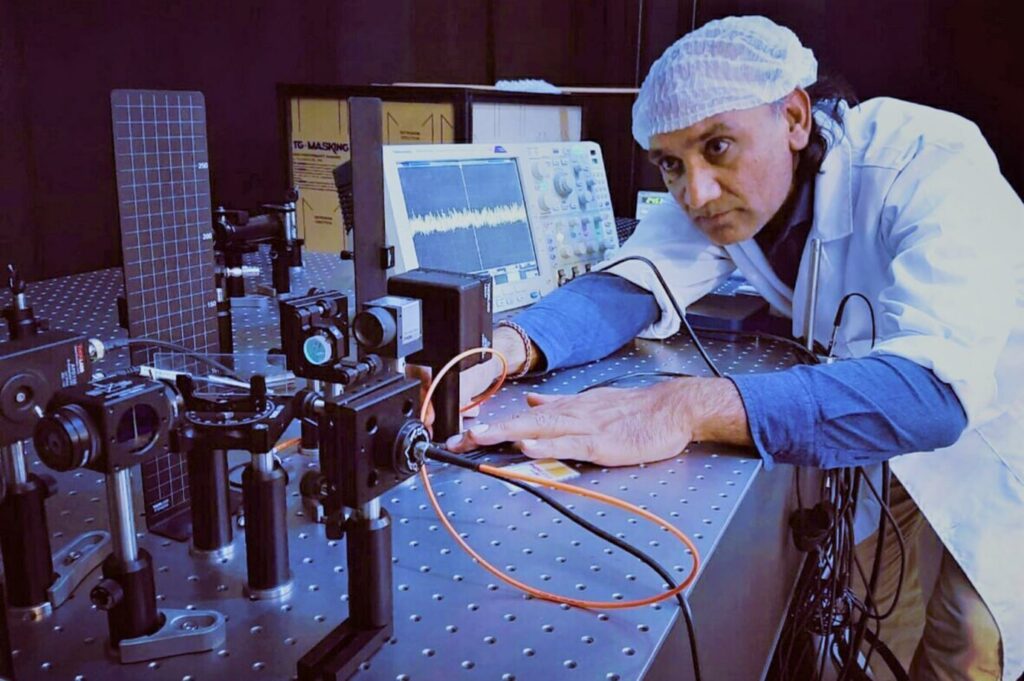A team of Quantinuum scientists report on an important research advance that shows logical qubits can outperform physical qubits, a key step toward quantum computers that can be used to solve practical problems. It’s also an achievement that only recently was thought to be years away.
The demonstration offers a path toward scalability, qubit efficiency and less circuitry needed for fault-tolerance, the team added.
David Hayes, a theory and architecture technical manager at Quantinuum, said in a company blog post that the research moves quantum computing closer to the point where encoded circuits outperform more primitive operations.
“People have worked with error corrected qubits before, but they haven’t reached this sort of special point where the encoded operation is working better than the primitive operation,” Hayes said. “The other thing that’s new here is that in other experiments we’re doing the error correction while we’re doing the operations. An important next step for us is to get the error rate induced by the error correction itself down further.”
In a handful of firsts, the company’s scientists report the study specifically shows:

- The first demonstration of entangling gates between two logical qubits done in a fully fault-tolerant manner using real-time error correction.
- The first demonstration of a logical entangling circuit that has higher fidelity than the corresponding physical circuit.
All forms of of technology require error-correction, according to the researchers. However, because of the delicate nature of quantum operations, error-correction is absolutely essential to create quantum devices that can perform calculations for practical applications. The team explains that logical qubits are groups of physical qubits working together to perform a computation while other qubits are performing tasks such as spotting and correcting errors. Tying too many qubits on error-correction tasks saps the real power of quantum computers.
Most classical error correction principles fail with quantum computers because of the basic nature of quantum mechanics, said Natalie Brown, an advanced physicist at Quantinuum.
“It becomes very difficult to suppress noise to very small levels, and that becomes a problem in quantum computing,” she said. “The most promising candidate was this quantum error correction, where we take the physical qubits, make a logical qubit.”
Two Implementations
In the study, the researchers characterized and compared two different implementations of fault-tolerant entangling gates on logical qubits. In the first instance, they used a 12-qubit trapped-ion quantum computer to implement a non-transversal
logical CNOT gate between two logical qubits using the quantum error correction code. In the second instance, a 20-qubit trapped-ion quantum computer was used to implement a transversal logical CNOT gate on two logical qubits.
The two codes were implemented on different but similar devices, and in both instances, all of the quantum error correction primitives, including the determination of corrections via decoding, are implemented during runtime using a classical compute environment that is tightly integrated with the quantum processor, according to the post.
Another Research Success for Trapped-Ion
The experiment was carried out on the H1-1 and H1-2 trapped-ion quantum computers. The design of these computers offer the flexibility to improve and to adapt to the fast-advancing nature of quantum information science.
“Quantinuum’s trapped–ion quantum computing roadmap is designed around continuous upgrades, enabled our flexible architecture and our precision control capabilities. This combination provides for outstanding, first–of–its–kind achievements that help accelerate the entire industry,” Tony Uttley, president and COO of Quantinuum, said.
Ciaran Ryan–Anderson, a senior advanced physicist at Quantinuum, said the newest research paper builds on prior research, which demonstrated the application of multiple rounds of quantum error correction to a single logical qubit.
“One of the first really important things to demonstrate was these repeated rounds of quantum error correction cycles,” Ryan-Anderson added.
That study was published in Physical Review X in 2021.
For more market insights, check out our latest quantum computing news here.




















